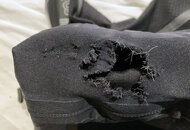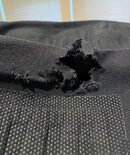- Messages
- 17,327
- Reaction score
- 13,749
- # of dives
- 100 - 199
It's actually bleedin' obvious if you think about it (which we - regrettably - do way too seldom), but what provides insulation is stagnant gas. Unless we're talking about a Thermos bottle, in which case it's vacuum, but I'm digressing. Again.I simply commented on a review where I had an assumption neoprene drysuits added some insulation and learned the Bare high density, crushed. compressed, neoprene really doesn't add much if any and also doesn't change buoyancy at depth due to compression, unlike thicker neoprene drysuits.
I understand the role of undergarments, really I do.
Thanks.
Anyways, in case of normal or compressed neo drysuits, some of that gas is contained in the cells of the material. And the volume of that gas decreases with depth, so you lose insulation. Just as it is with a wetsuit. If you use a non-insulating drysuit, like trilam or crushed neoprene, you maintain the gas volume (and the insulation) by adding gas to the suit (and undergarments) as you descend to higher pressures.





